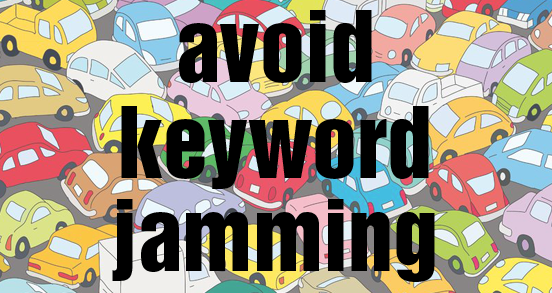 Content is king. Content is key. Content is indispensable.
Content is king. Content is key. Content is indispensable.
We’ve all heard this, although many of us are still a bit fuzzy on what it actually means. Today we are going to take a look at online content and how to produce “the good stuff.”
Defining Our Terms
Wikipedia defines content marketing as follows:
Content marketing is any marketing that involves the creation and sharing of media and publishing content in order to acquire customers. This information can be presented in a variety of formats, including news, video, white papers, e-books, infographics, case studies, how-to guides, question and answer articles, photos, etc.
Content Marketing has been defined in multiple ways. The meaning of the term depends a lot on the purpose and context. One of the most used definition is ‘the technique of creating and distributing relevant and valuable content to attract, acquire and engage a clearly defined target audience in order to drive profitable customer action.’
Content marketing creates interest in a product through educational or informative material. Successful content marketing relies on providing ‘consistent, high-quality content that solves people’s problems.’
A Strong Foundation
Just like building a house, you want your content program to have a solid foundation. Just as with a house, you’ll want to be able to expand upon it without having it sink into the swamp like a castle in a Monty Python movie. In order to create that foundation, before you start you need to ask a few questions about what you want to achieve:
- Sales?
- Brand recognition?
- Fundraising?
The best content is relevant, engaging, and useful. These are the factors that not only draw people in, but also convince them to share your work.
Who Am I Targeting?
When you start with the social media promotion portion of your program, remember that for different goals you must target different audiences, possibly using different platforms. The one core commonality is that your content must be useful. Entertaining content is good, but useful content is what will give you wings.
Identifying your audience provides a starting point for research. While long-form content is pretty much always going to be on your blog or website, the question of which social platforms to add to you mix depends on your audience.
Any novice can tell you that you should hit the big three: Facebook, Twitter, and Google Plus. The problem is that your target demographic may be digitally active elsewhere. For instance, if your topic or product is geared toward one of the hard sciences, you may well find that dedicated forums produce the most return on your efforts, while Facebook remains lonely and abandoned. If you’re working with visual arts, you may want to make Google Pictures or Flickr part of your core strategy.
While the best known platforms seem like the best starting point, it really all boils down to the question of “where do the people I want to reach interact with each other?” The goal is not to be present on the trendiest platforms as much as to be on the platforms preferred by your audience.
Creating Content
Now that you know how you are are going to approach your campaign, and have found the spaces where your audience socialize, it’s time to start creating content. Keep in mind that you are trying to become a trusted, expert voice in your field. This should guide your efforts in content creation. This means you can’t just spend all your time promoting your own work. Find pertinent articles and posts already out there and share them. By shining a light on the works of others, you not only get their attention, but also defuse the impression that your content is nothing but a sales pitch.
Your original content needs to be useful. Just look at the preponderance of how-to articles out there. Entire websites (such as Lifehacker) are composed entirely of them. This is practical content.
Say, for instance, you’re a manufacturer of hard drives. Relevant and useful content might included expanded versions of items covered in your product’s FAQ. In the case of a hard drive, this might mean instructions for setting it up as network attached storage (NAS), step-by-step guides to the best ways to create partitions, or troubleshooting tips for common issues.
If people find your content helpful, they will bookmark it and return for more. Even more importantly the chance that they will share it with their friends is significantly amplified.
 Optimize for Search
Optimize for Search
There’s a lot of flux in the SEO industry right now due to the constant algorithm changes Google and Facebook keep making. Even so, there is a lot you can do. Avoid keyword jamming. You should certainly use keywords, but you shouldn’t shoehorn them in at every opportunity. Instead use them when they naturally fit the flow of the piece. It is not the density of keywords that is important, as much as their proper and natural use.
This is especially important because it is one of the areas Google has been cracking down on for the past few years. The crafting of content using more natural language is something search engines look for now, so adopting this tone is a mission-critical objective.
Respond
No matter what social platforms are integrated into your marketing mix one of the most important things to keep in mind is the need to respond to incoming communications. If someone sends you an “at message” on Twitter, they will be expecting an answer, and the same is true on every platform from Pinterest to YouTube.
Make use of a common dashboard (I use HootSuite) to manage your postings and interactions. It will centralize all of your communications, making it much easier to respond to your readers in a prompt fashion. (Many dashboards also include tablet and smartphone apps, making it much simpler to keep up with things when you’re on the go.)
One of the things that people want from social media is immediacy, a feeling of real-time interaction on a level impossible in the days before the Internet. Being able to juggle communications on multiple platforms allows you to embrace and fulfill that desire. This is what is meant when you hear the phrase “building engagement.”
Image from the public domain.
 Optimize for Search
Optimize for Search